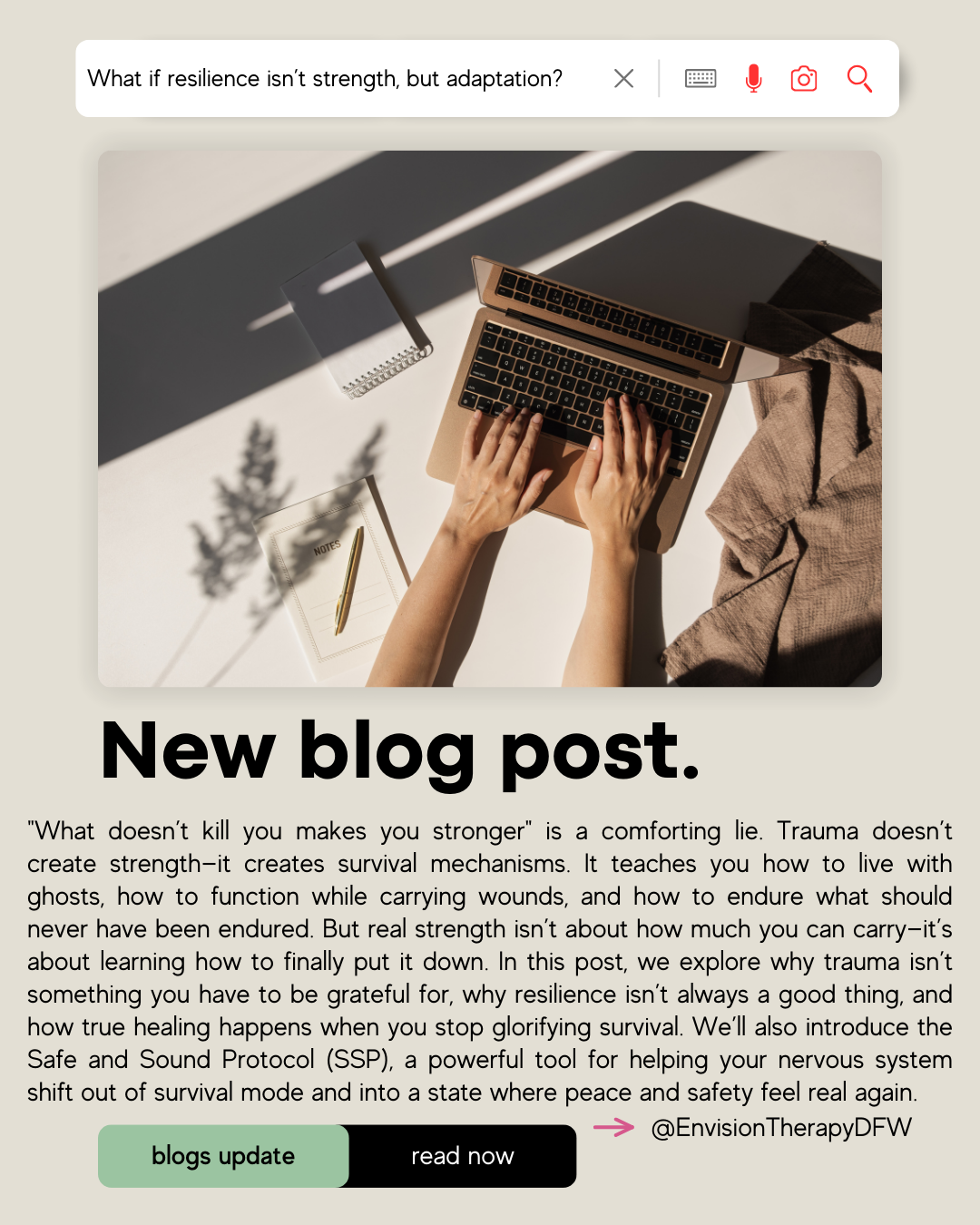What Doesn’t Kill You Doesn’t Make You Stronger—It Teaches You How to Live with Ghosts
You’ve probably heard the phrase a thousand times:
“What doesn’t kill you makes you stronger.”
It’s printed on T-shirts, thrown around as advice, and used to justify suffering. But if you’ve been through deep trauma, you know the truth.
Trauma doesn’t automatically make people stronger. It makes them good at surviving.
It teaches you how to function with wounds that never fully heal, how to move forward while carrying the weight of everything you lost, and how to live with ghosts that never really leave.
You don’t come out of trauma as a warrior. You come out of it as someone who had no choice but to keep going.
So let’s talk about this myth of “strength”—and why true strength isn’t about how much you can endure, but about how much you allow yourself to heal.
Survival Isn’t the Same as Thriving
Why Does Strength Feel So Heavy?
People love to glorify resilience.
They admire those who “overcame” their pain. They praise those who “didn’t let it break them.” But no one ever talks about the cost of survival.
Because surviving trauma doesn’t mean you walk away unscathed.
- It means you know how to function while deeply exhausted.
- It means you’ve learned to numb yourself just to get through the day.
- It means you carry the weight of experiences no one should have had to endure.
That’s not strength—it’s adaptation.
And while adaptation helps you survive, it doesn’t mean you’re okay.
Misconceptions About Trauma and Strength
Lie #1: “Trauma Makes You Stronger”
Trauma doesn’t make you stronger. It makes you adjust to pain.
If you were neglected, you learned to expect less from people.
If you were hurt, you learned to be guarded.
If you were abandoned, you learned not to ask for help.
That’s not strength. That’s a nervous system that has learned to survive in unsafe environments.
Lie #2: “If You’re Still Struggling, You’re Not Strong”
People assume that if you’re struggling, you must not be “strong enough” yet. That true strength means you’ve moved on, let go, or “found peace.”
But struggling doesn’t mean you’re weak. It means you’re still here.
And sometimes survival is the strongest thing you can do.
Lie #3: “You Should Be Grateful for What You Went Through”
Let’s get one thing straight:
You don’t have to be grateful for your trauma.
You don’t have to find a silver lining in your suffering. You don’t have to turn your pain into a lesson for the sake of making other people comfortable.
Yes, you survived. But that doesn’t mean it was ever something you should have had to survive.
How to Shift from Survival to Healing
1. Stop Measuring Strength by How Much You’ve Endured
Your worth isn’t defined by your pain tolerance. You are not more valuable because of how much you’ve suffered.
Instead of asking, “How much can I handle?” ask:
✔ How much softness can I allow myself to experience?
✔ How safe do I feel in my own body?
✔ How much rest do I give myself permission to have?
2. Let Go of Strength as an Identity
If trauma has shaped your identity, it makes sense that you hold onto it.
You’ve built your entire life on being resilient. On being strong. On enduring what others couldn’t.
But here’s the thing:
You don’t have to keep proving your strength.
Let yourself exist outside of survival mode. Let yourself be soft, unsure, vulnerable, and human.
You don’t have to carry the weight of your past to deserve a future.
3. Learn to Trust Safety Again
For those who’ve survived trauma, safety can feel… unfamiliar.
When you’ve lived in survival mode for so long, peace can feel suspicious. Your brain might be waiting for the next disaster, the next betrayal, the next moment when the rug gets pulled out from under you.
But healing is learning that not everything is an emergency anymore.
One of the most effective ways to retrain your nervous system to recognize safety? The Safe and Sound Protocol (SSP).
Rewiring Your Nervous System with the Safe and Sound Protocol (SSP)
If you’ve been stuck in survival mode for years, your nervous system might not recognize peace as safe.
SSP is a neuroscience-backed listening therapy designed to help your brain shift out of fight-or-flight mode and into a state where safety feels real and lasting.
SSP can help with:
✔ Calming hyper-vigilance
✔ Reducing emotional reactivity
✔ Making safety feel natural instead of foreign
✔ Helping you release tension stored in your body
Because true strength isn’t carrying trauma forever—it’s learning to put it down.
Comment “SSP” below if you want to learn more about how this tool can help your nervous system heal.
Final Thoughts: Healing Creates True Strength
You don’t have to keep proving your resilience.
You don’t have to turn your pain into a success story just to make it meaningful.
You don’t have to live with ghosts forever.
Healing doesn’t mean forgetting. It doesn’t mean pretending the past never happened. It means finally letting yourself rest.
Because true strength isn’t endurance—it’s learning that you don’t have to keep enduring.
You are allowed to put the weight down.
Want to Move Beyond Survival Mode?
If this post spoke to you, I want you to know that you don’t have to do this work alone.
Click SSP to learn more about how the Safe and Sound Protocol can help regulate your nervous system and bring your body out of survival mode.
Or reach out today to schedule a consultation with one of our therapists who specialize in trauma recovery and nervous system healing.

